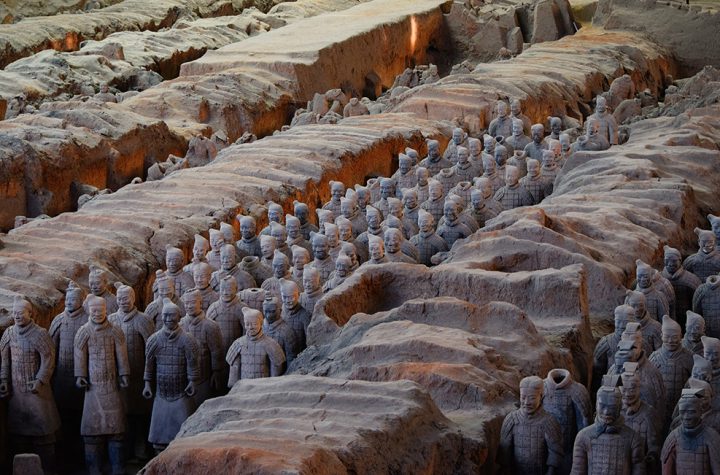
Under Wetsuweten law, two hereditary house chiefs opposing Coastal GasLink are considered Gitxsan Gitxsan supporters seen here on Feb. 25, 2020 and one is Babine, says Gary Naziel (Maxlaxlex’), a former Witset band councillor and a heavy-machine operator with Kyah Resources, which is sub-contracted by CGL.
Jimmy Jeong/The Globe and Mail
At first, Shirley Wilson was dead set against the Coastal GasLink pipeline.
Theres no way theyre going to come wreck our land, the 63-year-old member of Skin Tyee First Nation remembers thinking, chuckling at the memory. But slowly, Ms. Wilson, a mother of four grown children, started to soften.
She hopes the pipeline can help chip away at the crushing poverty that is the cause of so many social ills addictions, abuse, suicide and premature death. In the past four years, she buried her 40-year-old son and her 37-year-old son-in-law.
Story continues below advertisement
The Skin Tyee reside on the quiet, south shore of Francois Lake, a deep, wild trout lake in British Columbias rugged north country. They call themselves southsiders. A 15-minute ferry ride “the Francois Forester is the only way across. The cold, clean air smells of wood smoke and pine. Pot-belly stoves are still a main source of heating in the village, where tidy homes are ensconced in thigh-high snow. An independent streak typifies many here.
Over five days last week, The Globe and Mail travelled from Kitimat to Burns Lake and back, more than 1,250 kilometres in total, speaking to First Nations people who live along the most contested stretch of the proposed pipeline. The trip overlapped with talks between the Wetsuweten hereditary leadership and the federal and B.C. governments, which ended with a proposed agreement on Sunday.
A little more than a quarter of the Skin Tyees 187 members live on-reserve. Most attended meetings with TC Energy, the company behind Coastal GasLink, says Ms. Wilson, who works at the local health station. Over five years, the two sides met dozens of times at the band office. Slowly, a consensus formed.
In 2014, the Skin Tyee became the first Wetsuweten nation to sign on to the $6.6-billion, 670-kilometre pipeline. Neighbouring Nee Tahi Buhn First Nation, another eastern Wetsuweten community, was quick to join them.
Each nation received just shy of $3-million from the province, part of the agreements they signed with Victoria. The money is locked up in trusts to fund training, education and cultural programming. Once fuel begins flowing from B.C.s eastern gas fields to the Pacific port at Kitimat, both nations will receive annual dividends, like the other 18 First Nations along the route. (Bands also signed impact and benefit agreements with Coastal GasLink, the terms of which are not public but typically include provisions for jobs, training and other benefits.)
Ms. Wilson, a member of the Gilseyhu (Big Frog) clan, says support for the pipeline remains strong, both in Skin Tyee and Nee Tahi Buhn, where her daughter lives.
But elsewhere, Wetsuweten opinion is divided. Both sides of the debate remain deeply suspicious of the other, each believing their adversary has been bought the antis by environmentalists and environmental NGOs, the pros by Big Oil. Each side, meanwhile, claims the other has been marshalled by outside forces to help secure national policy outcomes.
Story continues below advertisement
The fight, which is also exposing the continuing reality of racial bigotry facing Indigenous people, risks escalating into a full-blown national crisis involving reconciliation, the economy and the environment.
Next month, Ms. Wilson will start a new job as a construction monitor and community liaison with CGL. Ill go out every day with the crew to make sure theyre adhering to the environmental and cultural standards we set for them. After two years, she plans to retire.
She is fiercely proud of her First Nation, which recently opened the newly renovated Tweedsmuir Hotel in neighbouring Burns Lake. A new healing lodge on Uncha Lake is under construction. She remains deeply connected to her clans territories in the Sibola Range, where they hunt moose and mountain goat and pick enough huckleberries, blueberries and salmonberries to last the winter.
But her family has stopped visiting their summer camp site at Morice Lake for years, ever since pipeline opponents erected a supply camp nearby. The arrests made there in February escalated a conflict that has been quietly simmering among the Wetsuweten for years.
At a benefit concert in nearby Smithers, seen here on Feb. 22, 2020, hand-painted signs in black and red ‘Reconciliation Not Bullets’ and ‘Fracking gashole. Your backyard is next’ were given to the crowd.
Jimmy Jeong/Jimmy Jeong/www.jimmyshoots.com
The white-hot zone of conflict is the Witset First Nation, three hours west of here, on Highway 16. The lonely two-lane road snakes past vast, dark forests and fields criss-crossed with snowmobile tracks on its winding route to the Pacific Ocean. The area is remote, even by B.C. standards. So many women and girls have vanished or turned up dead along it that northerners have another name for it.
Girls dont hitchhike on the Highway of Tears, a series of large, yellow billboards read. Killer on the loose!
Story continues below advertisement
The Witset, with a total membership reaching 2,050, are the most populous and politically powerful of the six Wetsuweten bands created by the Indian Act. (Five have signed on to the project; the Witset were the last to do so.) According to archaeologists, the village of Witset, a 40-minute drive from Smithers the regional hub has been continually inhabited for 6,000 years.
Our way of life is everything for us, says Simb yez Wilson, who grew up in Witset, which is still better known as Moricetown its former name.
The land in question, home to some 25,000 people of whom 5,000 are Wetsuweten is magnificent. Dark valleys peel off from aquamarine rivers rich with sockeye, steelhead, kokanee and trout. Below snow-capped peaks are ancient forests of towering lodgepole pine and spruce, home to grizzly bears, caribou and moose. What you notice most under the vast Wetsuweten skies is the cathedral stillness of the place.
These jobs are temporary. The resources dont have a timeline, the 21-year-old said after delivering a stirring banjo-soul performance at a benefit concert in nearby Smithers. Hand-painted signs in black and red Reconciliation Not Bullets! and Fracking gashole. Your backyard is next were given to the crowd.
There is urgency to their campaign. Some 46 per cent of the pipeline right-of-way has already been cleared, advancing on Wetsuweten territory from the east and west. For now, only the mid-section, a 163-kilometre stretch running roughly from Skin Tyee to Morice Lake, remains untouched.
Between the Witsets pros and antis is a large group of fence-sitters. Some support economic development, but worry about the environmental and political risks. With careers, friendships and marriages at stake, an even larger group is keeping mum.
Story continues below advertisement
People are afraid to speak out, Caryssa Nikal says. The 27-year-old business student knows this too well. Her father is Barry Nikal, Witsets former chief councillor, one of the best-known Wetsuweten proponents of the projects. Her mother, Angeline Alfred, a Wetsuweten hereditary chief, is staunchly opposed.
The conflict has brought out the worst in people, she says. Its scary.
Ms. Nikal says that after a recent incident at the Twin Valley Inn, a Smithers bar, she stopped going into town altogether. There, a man recognized her 22-year-old friend, who has spent time working security at the Unistoten Camp a protest site and threw a drink on her.
Smithers, a quiet mountain town with vistas of the Babine and Telkwa Mountain Ranges, has come alive with the project. Its hotels and restaurants are humming. A local truck rental has erected a massive sign reading LNG CANADA on the highway outside the city. The largest private investment project in Canadian history deserves a cool sign, right?, says Fred Wilson, the owner of Northwest Truck Rentals Inc.
But the conflict is also re-energizing dormant anti-Indigenous sentiment and racism. A sign reading Yes to Jobs/Its Time for BC to Idle No More! was paint bombed, then removed.
In Smithers these days, you feel like a drunken Indian walking into a redneck bar, says hereditary house chief, Ron Mitchell (Hagwilnekhlh). The racism was always there, he adds. It never went away. At times like these, it surfaces.
Story continues below advertisement
Frank Alec, Wet’suwet’en hereditary leader who took the name Woos, seen here on Feb. 24, 2020, said this: ‘This is our territory. This is our responsibility. These are our duties. This is what we must do keep our clean air, water or culture and the freedoms that people enjoy.’
Jimmy Jeong/Jimmy Jeong/www.jimmyshoots.com
The Haisla can tell you how resource development used to work up north. In 1952, the coastal First Nation was relocated to Kitamaat Village on the western shore of Douglas Channel to make way for an aluminum smelter built by Alcan in Kitimat.
Growing up, says Haisla chief councillor, Crystal Smith, you had two options: Alcan or become a teacher. There was nothing else.
Many have labelled the millennial leader a sellout, and an apple “First Nations on the outside, white on the inside, she explains, rolling her eyes. She has been accused by other First Nations people of sleeping with the chief executive of LNG Canada, and more.
Her support for the project is deeply felt. Her partner died by suicide several years ago, forever changing me and my girls lives.
Ms. Smith and her identical twin sister were raised in Kitamaat Village by their grandparents, both of whom were residential school survivors. Growing up, addictions were constantly around me. Poverty? Yep. Sexual abuse? Been there. I dont want our people to continue to live that life.
Following years of negotiations and 86 meetings with TC Energy, the coastal band of 1,800 voted 92 per cent in favour of the project.
Story continues below advertisement
Gas will be liquefied and shipped overseas from Haisla territory, which is fronted by a deep-water fjord, home to killer whales, humpback whales, sea lions and salmon.
With revenue from development projects outstripping payments of federal money, the Haisla have been sending members to trade schools, law schools, even yoga-teacher training. Federal rules bar the band from funding all these because they are not four-year undergraduate programs.
Its hard to overstate how much has changed. A decade ago, Haisla finances were in such dire straits that Ottawa nearly placed the band whose mouldy offices had been repeatedly condemned under third-party management.
A new elders centre is providing meals-on-wheels for elders in need. A Haisla drug counsellor based in Vancouvers Downtown Eastside is caring for members trapped there by addictions. My daughter gets to go down the channel for two weeks, to learn to gather our food and drum and sing and speak our language, Ms. Smith says. None of these programs existed five years ago.
Seeing the Haisla access things most Canadians take for granted is deeply gratifying, Ms. Smith says. Her sister recently took out a mortgage, a first in her family. Ive never seen pictures of First Nations people with their feet on sandy beaches in Mexico before, says Ms. Smith, who has left Canada only once, when she took her girls to Disneyland.
She breaks down every time she tries to describe the difference between her generation and the one coming of age today. They have all the supports they need. Alcan and teaching arent their only options.
Growing up, says Haisla chief councillor, Crystal Smith, seen here on Feb. 23, 2020 you had two options: ‘Alcan or become a teacher. There was nothing else.’
Jimmy Jeong/The Globe and Mail
The conflict created by the Wetsuwetens dual leadership structure the hereditary chiefs versus the elected band councils is well known.
But a third fault line emerged last week. A growing number of Wetsuweten claim that the hereditary leadership is not following their law, nor accurately reflecting the will of their people.
One-fifth of Wetsuweten hold chiefly titles. Those that do are known as either deniize (real or only men) and tsalenze (real or only women).
The voices of the tsalenze and matriarchs have been notably absent from discussion gripping the matrilineal community.
Several matriarchs claim they are being silenced and bullied, their opinions disregarded by the all-male leadership. Three female hereditary chiefs supportive of the pipeline were stripped of their chiefly titles.
This is not deni biits wa adenthe way the feast works, Rita George, a hereditary sub chief and expert in Wetsuweten law, told The Globe and Mail last week. The phrase is commonly used to describe the nations legal system.
The feast is the core of Wetsuweten society, its court, its parliament, its art gallery, its library. In the participatory democracy, hereditary chiefs are legally obliged to listen to their members.
Critics further claim that three of the eight hereditary house chiefs opposing Coastal GasLink are not Wetsuweten.
Under Wetsuweten law, two are considered Gitxsan, and one is Babine, says Gary Naziel (Maxlaxlex’), a former Witset band councillor and a heavy-machine operator with Kyah Resources, which is sub-contracted by CGL.
Fact-checking Wetsuweten claims over heritage is not easy. The nations legal code was handed down in unwritten records, mouth to mouth.
Two documents provide some answers. Eagle Down is Our Law, written by an anthropologist tasked by the Wetsuweten in the 1980s with providing an expert opinion in Delgamuukw v. British Columbia, a seminal land-claims case, is one. The testimony the late Johnny David (Maxlaxlex’) provided in Delgamuukw is another.
Our law is that you belong to your mothers side, Chief Gaslebah is quoted in Eagle Down. You cant change that. Even if you want to, you cant change your clan.
Names and territories are transferred through the mothers side, Mr. David told the court. I follow my mother, not my father. I can use my fathers territory, but I cant own it.
Asked to respond to the claim, Frank Alec, who took the name Woos after it was stripped from Darlene Glaim, and who is said to be Babine, not Wetsuweten, said this: I believe theyve been fed a script. This is our territory. This is our responsibility. These are our duties. This is what we must do keep our clean air, water or culture and the freedoms that people enjoy.
WETSUWETEN TERRITORY AND
COASTAL GASLINK PIPELINE
B.C.
ALTA.
Planned
Coastal GasLink
pipeline
Vancouver
Victoria
U.S.
0
150
KM
WET’SUWET’EN CLANS
Gilseyhu (Big Frog)
Tsayu (Beaver clan)
Laksilyu (Small Frog)
Laksamshu (Fireweed)
Gitdumden (Wolf/Bear)
Smithers
Houston
Kitimat
0
50
KM
THE GLOBE AND MAIL, SOURCE: TILEZEN;
OPENSTREETMAP CONTRIBUTORS; COASTAL
GASLINK; OFFICE OF THE WETSUWETEN
WETSUWETEN TERRITORY AND
COASTAL GASLINK PIPELINE
B.C.
ALTA.
Planned
Coastal GasLink
pipeline
Vancouver
Victoria
U.S.
0
150
KM
WET’SUWET’EN CLANS
Gilseyhu (Big Frog)
Laksilyu (Small Frog)
Gitdumden (Wolf/Bear)
Tsayu (Beaver clan)
Laksamshu (Fireweed)
Smithers
Houston
Kitimat
0
50
KM
THE GLOBE AND MAIL, SOURCE: TILEZEN; OPENSTREETMAP
CONTRIBUTORS; COASTAL GASLINK; OFFICE OF THE
WETSUWETEN
WETSUWETEN TERRITORY AND COASTAL GASLINK PIPELINE
B.C.
ALTA.
Planned
Coastal GasLink
pipeline
Vancouver
0
150
Victoria
U.S.
KM
WET’SUWET’EN CLANS
Gilseyhu (Big Frog)
Laksilyu (Small Frog)
Gitdumden (Wolf/Bear)
Tsayu (Beaver clan)
Smithers
Laksamshu (Fireweed)
Houston
Kitimat
0
50
KM
THE GLOBE AND MAIL, SOURCE: TILEZEN; OPENSTREETMAP CONTRIBUTORS;
COASTAL GASLINK; OFFICE OF THE WETSUWETEN
In a way, the conflict is as old as British Columbia.
Some anthropologists consider the Wetsuweten among the most elaborate hunter-gatherer societies north of Mexico, journalist Terry Glavin wrote in A Death Feast in Dimlahamid. The names and titles, which have been passed down for untold generations, are some of the oldest of any society on Earth.
The Wetsuweten, traditionally a semi-nomadic people, summered in villages in large, cool, cedar-planked homes, moving onto the lands in fall to hunt caribou, grouse and grizzlies. Come winter, they fished char and whitefish through lake ice, returning to their villages in summer to greet the returning salmon.
When B.C. joined Canada in 1871, Victoria claimed that it controlled all public lands, including the 22,000 square kilometres held by the Wetsuweten.
In reality, only the Douglas Treaties on Vancouver Island and Treaty 8 in northeast B.C. were signed. Elsewhere, the land was never ceded. Canadas terms of union with B.C. contained this central flaw.
In 1901, the province began giving away large parcels of unoccupied, unclaimed land belonging to the Wetsuweten.
The cleared, fenced land, Mr. David told the court in Delgamuukw, was anything but. It was taken, often while his people were away from their summer villages. Their homes and smokehouses used to cure salmon were burned, he added. When they protested, they were ignored or jailed.
The Wetsuweten were left without redress. Until 1951, it was illegal for First Nations people to hire a lawyer to fight land claims.
If you know the territory well, it is like your own skin, Mr. David, who died in 2018 at the age of 115, told the court. Sometimes you can feel the animals moving on your body as they are on the land, the fish swimming in your bloodstream.
His testimony in Delgamuukw, which took two years to deliver, indicated that the Wetsuweten have stewarded the northern territory roughly the size of New Jersey for thousands of years, and have an exclusive right to continue doing so.
But in 1997, the Supreme Court stopped short of saying where this title exists. The questions were supposed to be resolved by treaty negotiations. Failures at the treaty table led directly to the current imbroglio.
During Delgamuukw, we were united nobody was against it, says house chief Ron Mitchell. Everyone stood behind the elders, the chiefs. We need to do what we did with Delgamuukw.
But as the Wetsuweten are learning, achieving unity on issues around environmentally sensitive, financially lucrative resources projects is far less easy.
The band chiefs and the hereditary chiefs are like the parents, says Mr. Mitchell, who speaks for the Likhsilyu Clan.
The people are the children. If mom and dad are fighting, the kids take sides. We need the two governments to come back together.
“Thats where we start.
Kitimaat Village is the home community of the Haisla Nation near Kitimat, British Columbia, Feb. 23, 2020.
Jimmy Jeong/Jimmy Jeong/www.jimmyshoots.com





More Stories
After a cluster of new COVID-19 cases among the White House staff and a campaign offical, the election night watch party in the White House has become another symbol of U.S. President Donald Trump’s cavalier attitude toward a virus that is ripping across the …
Rob Lucas says the SA economy is forecast to go backwards by 0.75pc in 2020-21, a better outcome than a national economy forecast to shrink 1.5pc.
Labor and crossbench senators want changes to JobMaker, arguing too many workers will be excluded from the hiring credit scheme.